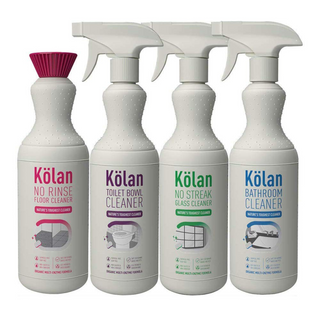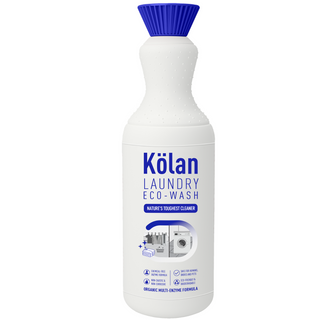Carbon Footprint is the amount of greenhouse gases produced and released into the atmosphere by an individual, group, company, state or country. The primary gases include carbon dioxide (CO2), methane (CH4), nitrous oxide (N2O), water vapour (H2O), ozone (O3) & hydrofluorocarbons (HFC).
It is commonly expressed in equivalent tons of carbon dioxide (1000kg of carbon dioxide is 1 unit of carbon footprint)
Simply put, all activities on the planet require energy, the source of this energy is the prime source of greenhouse gases and thus higher the human activity, more is the carbon footprint.
The biggest contributors to the carbon footprint are the burning of fossil fuels like petrochemicals and coal, production of building material including cement and deforestation.
EFFECT OF GREENHOUSE GASES ON ENVIRONMENT
Greenhouse gases are naturally present in the environment and are crucial to sustaining life on earth. These gases trap the suns energy and reflect it back onto the planet thus providing a warm, life-sustaining climate on earth. Without them, the earth average temperature will drop to -18 degrees Celsius.
It is the overproduction of these gases which throws off the natural balance and traps more than required energy thus resulting in global warming. This is a vicious circle as higher temperatures produce more greenhouse gases and the cycle keeps gaining speed.
CARBON FOOTPRINT OF AN INDIVIDUAL
All activities we undertake on a day to day basis like food, travel, entertainment, communication etc add to our carbon footprint. Anything which requires the energy of any kind adds to your carbon footprint.
Thus, by definition, the lazier we are, the less productive we are, the lower is our carbon footprint. Higher the productivity, higher the consumption, more is our carbon footprint. The average per capita carbon footprint in a developed nation is much higher than a developing or poor country. Achieving a fine balance between improving the quality of life and minimizing mindless consumption is the key to reducing and maintaining a sustainable carbon footprint.
Increasing efficiency while maintaining and improving productivity is the best and only way to achieve and maintain this fine balance.
HOW DO WE REDUCE OUR INDIVIDUAL CARBON FOOTPRINT?
Prudence, efficiency and responsibility will ensure that the carbon footprint is mitigated and balanced. Important to understand that creation and release of greenhouse gases is an important and necessary natural phenomenon. Too much of the same is the problem.
Thumb rule is to perform an activity in the simplest and most natural way possible. Eg:
- Use less water for daily activities like brushing, bathing etc.
- Walk wherever possible
- Switch off lights and appliances when not in use.
- Consume a balanced diet with seasonal ingredients. Less processed, more natural.
- Use natural sources of energy like the sun and the wind for activities like drying of clothes etc.
- Use organic enzymatic cleaning solutions instead of harsh, caustic chemicals for cleaning and sanitation.
- Reuse, recycle and compost wherever possible. etc
It’s a simple form of responsible consumption as every small bit adds up.
PLANTS are the only natural species which consume carbon dioxide and produce oxygen. Thus, in every which way they are our true unconditional, selfless friends. Planting trees, contributing in increasing the green cover, preventing deforestation by means of education and awareness etc can contribute significantly in reducing and absorbing the excess carbon dioxide in the atmosphere.
TECHNOLOGY is another great tool if used prudently. Emails over letters, digital cameras over film rolls, video conferencing and digital meeting rooms over physical travelling etc are all ways to minimize unnecessary wastage of time, energy and productivity while minimizing carbon footprint at the same time.
Green House Gases on Earth – How & Why?
When the energy of the sun reaches the earth, a part of it is reflected back into space. If all of this reflected energy is lost in space then the average temperatures on earth can fall as low as 18 to 20 degrees below freezing. Nature has provided a solution to this problem in the form of greenhouse gases (water vapour, carbon dioxide, methane, nitrous oxide, ozone etc). These gases trap the reflected energy and radiate it back onto the earth thus providing the necessary warmth and energy for life to prosper on the planet.
Unchecked population growth and the resultant increase in exploitation of the planet has resulted in a dramatic increase in production of certain greenhouse gases, mainly carbon dioxide, methane etc.. Burning of fossil fuels (petrochemicals, coal etc), deforestation, livestock farming, construction activity, airconditioning etc all produce a huge amount of carbon dioxide and other greenhouse gases thus creating a thicker than required layer of these gases around the earth. This causes more of the suns energy to be trapped and reflected back on the earth resulting in warmer temperatures thus contributing to global warming.
Kolan Effect on the Reduction of Carbon Footprint:
Most household cleaners are simply harsh caustic chemicals mixed with water which provide instant superficial cleaning. They merely replace dirt with chemicals and create a biofilm on the surface which provides the most fertile breeding ground for viruses and bacteria. The production and disposal of these harsh chemicals create a large amount of greenhouse gases. The long term damage to the surface, human & plant health and groundwater caused by such chemicals further add to the carbon footprint.
Kolan enzymatic solution with a unique multi-enzyme formula does not merely replace dirt but actually helps nature to decompose and destroy most of the dirt by speeding up the biochemical reactions by thousands of times thus helping nature do its job in a better and more efficient way. It destroys biofilm and thus protects against the breeding of harmful bacteria, viruses and germs and provides a healthier environment for all life forms. The enzymes in the solution can be disposed down the drains and they keep working for up to 24 hours thus improving the quality of groundwater and fertility of the soil.
























